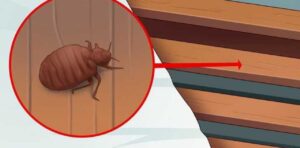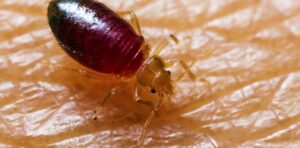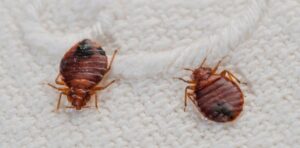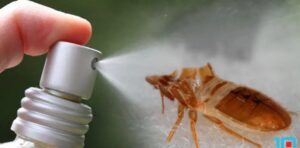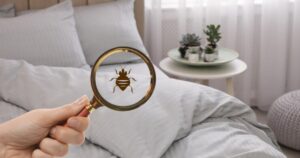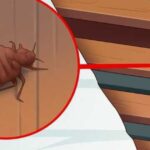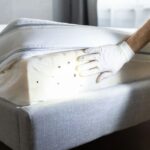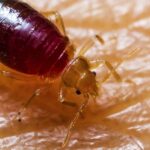Bed bugs do not typically live on wood floors. They prefer to hide in cracks and crevices, such as those in mattresses, furniture, or behind baseboards. While they can crawl on wood floors, they primarily stay close to their human hosts for feeding, which is usually in or near beds. Regular cleaning and maintenance of your home can help prevent and detect bed bug infestations.
The comfort of your cozy home, but then consider the potential lurking threat beneath your feet. Do bed bugs live on wood floors? This question may keep you up at night, but fear not, as we’re about to delve into the fascinating world of bed bug behavior and their interaction with wooden flooring.
Quell your concerns and delve into the details. By the end of this guide, you’ll have the knowledge needed to protect your wooden floors and ensure a bedbug-free environment in your home.
Habitats of Bed Bugs

Bed bugs are highly adaptable pests, and they can be found in a wide range of environments. Their primary habitat is close to their host’s resting place, usually within 5-20 feet of areas where people sleep. This is why they are commonly associated with mattresses, box springs, and bed frames.
Bed bugs can also hide in:
- Upholstered furniture: Couches, chairs, and other upholstered pieces are common hiding spots for bed bugs.
- Wall cracks and baseboards: Bed bugs can easily slip into small cracks and crevices in walls and baseboards.
- Luggage and clothing: They can hitch a ride from one place to another through luggage, clothing, or personal belongings.
- Electrical outlets and appliances: These pests can also inhabit electrical outlets and other small appliances, making them harder to locate.
Can Bed Bugs Live on Wood Floors?
While bed bugs can hide in various places, they do not typically live on wood floors for extended periods. Wood floors do not offer the same shelter and protection that cracks in walls, mattresses, or upholstered furniture provide. Bed bugs prefer hiding in locations where they can remain close to their food source, i.e., humans.
Bed bugs might briefly traverse wood floors while searching for a new hiding spot or host. If you have an infestation, you might spot bed bugs on your wood floor, but this is usually just a temporary stage of their journey.
Preventing Bed Bugs on Wood Floors
Although bed bugs are not likely to live on wood floors, it is still essential to take preventive measures to keep your home bed bug-free. Here are some tips:
- Regularly inspect your mattress and bedding for signs of bed bugs, such as dark spots, shed skins, or live insects.
- Vacuum your home regularly, paying special attention to cracks and crevices in walls and furniture.
- Be cautious when traveling, as bed bugs can hitch a ride in your luggage. Inspect hotel rooms and your luggage upon returning home.
- Seal any cracks or gaps in walls and baseboards to reduce potential hiding spots for bed bugs.
- If you suspect a bed bug infestation, consult a professional pest control service to address the issue promptly.
Can Bed Bugs Live In Wood
Bed bugs prefer to hide in cozy spots close to where people sleep. They rarely choose wood as their home. While they might briefly cross wood floors in search of shelter, they don’t thrive there. Instead, they favor bedding, furniture, and cracks in walls. So, you’re less likely to find them living on your wood floors. If you want to keep your home bed bug-free, keep an eye on your mattress and bedding for any signs of these pests.
Regular vacuuming can help eliminate them from hiding spots. When traveling, check hotel rooms for bed bugs and inspect your luggage after trips. Taking these precautions will help you keep bed bugs at bay. Sealing gaps in walls and baseboards is a smart move to reduce hiding spots for bed bugs. If you suspect an infestation, it’s best to call professional pest control. In conclusion, while bed bugs can briefly wander across wood floors, they don’t make it their home; they prefer hiding closer to their hosts.
Can bed bugs live on wood floors?
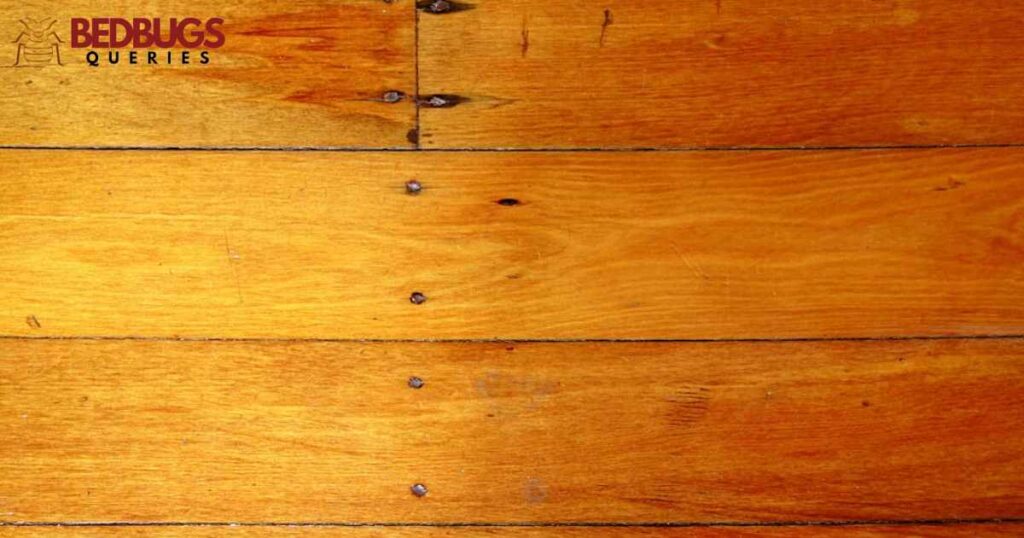
Bed bugs are drawn to mattresses, upholstery, and cracks in walls. They usually stay within 5-20 feet of where people sleep. While you might spot them on a wood floor, it’s usually a temporary stop during their search for a hiding spot or host.
Bed bugs live on wood floors Bed bugs typically avoid wood floors. They prefer hiding close to their human hosts. Wood floors lack the shelter and proximity to their food source, making them an unlikely habitat for these pests. To prevent bed bugs, regularly inspect your bedding, vacuum your home, and be cautious when traveling. While wood floors may not be their ideal home, remaining vigilant is essential to keep your space bed bug-free.
Can Bed Bugs Live in Wood Furniture
Bed bugs are crafty pests. They hide in small, dark places during the day and come out at night. While they don’t usually live in wood furniture, they can hide there temporarily. Cracks, crevices, and joints in wooden furniture can provide a temporary refuge for these blood-sucking insects.
Wooden furniture isn’t their favorite hideout, but they’ll use it if needed. They primarily seek warmth and proximity to their hosts. Beds, sofas, and upholstered items are their top choices. While they might visit wood furniture briefly, it’s not their long-term home. To prevent bed bug infestations, keep an eye out for signs like tiny reddish-brown bugs, dark spots, or shed skins. If you spot these, act quickly. Regular cleaning, vacuuming, and checking furniture can help keep your home bed bug-free.
Bed Bugs and Wood Furniture
Bed bugs can hide in the cracks and crevices of wood furniture, making it a potential hiding spot. While they don’t live there permanently, infested furniture can become a transportation method for these pests.
What to Look For
Inspect wood furniture for small, reddish-brown bugs, tiny eggs, or dark spots. If you see these signs, there might be bed bugs. Quick action is crucial to prevent an infestation.
Preventing and Treating Bed Bugs in Wood Furniture
Regularly check and clean your wood furniture. If you suspect bed bugs, consider professional pest control. Preventing bed bugs in your furniture is essential to maintain a bed bug-free home.
Signs of Bed Bugs in Wooden Furniture
Bed bugs can hide in wooden furniture, making it important to spot early signs. Look for tiny, reddish-brown bugs or small eggs on or near the furniture’s seams. Check for dark, rust-colored stains, indicating bed bug feces. Unpleasant, musty odors could also be a sign of an infestation.
Inspect all cracks and joints in wooden furniture, as these are common hiding spots. Be cautious of small, itchy bites on your skin after being near the furniture. If you see any of these signs, it’s essential to address the issue promptly. Consult a professional pest control service for thorough inspection and treatment.
Do Bed Bugs Like Wood?
Bed bugs don’t particularly like wood. They prefer hiding in tiny cracks and crevices. While they may cross wood floors in search of a hiding spot, they typically favor softer materials like mattresses and upholstery. These pesky insects seek proximity to their human hosts. Wood floors lack the shelter bed bugs crave, so they generally won’t live there. Instead, they opt for dark, protected spaces.
To keep your home bed bug-free, focus on inspecting bedding and furniture. Seal cracks in walls and baseboards. While bed bugs may briefly visit your wood floors, they’re unlikely to make a permanent home there.
Do Bed Bugs Eat Wood?
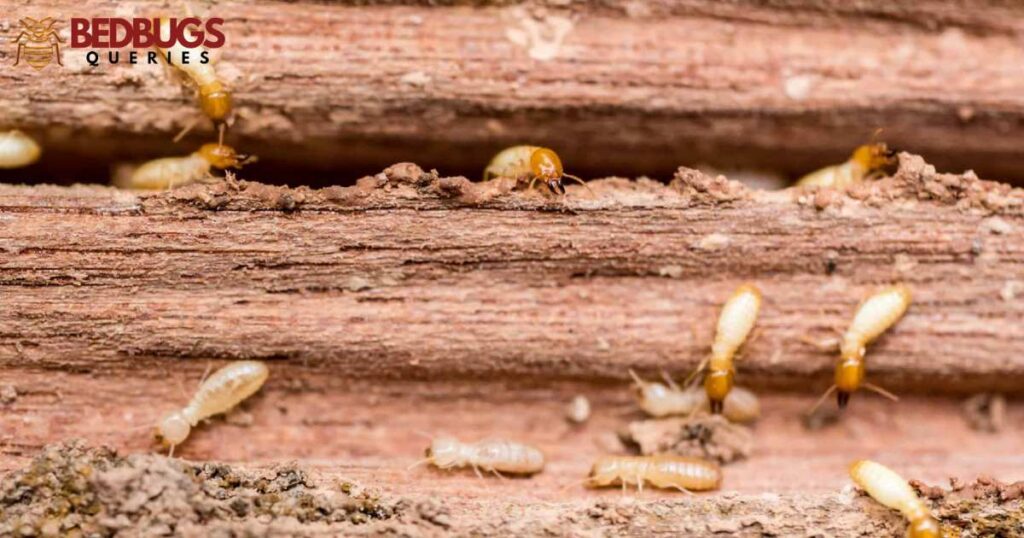
Bed bugs do not eat wood. They feed exclusively on blood. These tiny pests are drawn to warm-blooded hosts, like humans, for their nourishment. They pierce the skin, feed, and then return to their hiding spots in cracks, furniture, or bedding. So, while they may hide in wooden furniture, they don’t consume the wood itself. No, bed bugs do not eat wood. These tiny insects primarily feed on blood, not wood. Bed bugs need a blood meal from humans or animals to survive and reproduce.
Wood is not their source of nutrition. They are attracted to warm-blooded hosts and bite to obtain a blood meal, making wood an irrelevant part of their diet. Preventing bed bug infestations is about vigilance, not wood protection. To protect your home, focus on detecting and addressing bed bug issues by examining beds, furniture, and other potential hiding spots rather than wood surfaces.
Bed Bugs in Couch
Bed bugs in couches are a common problem. These tiny pests hide in the seams and cushions. They come out at night, biting and causing itchy welts. It’s vital to inspect and treat your couch if you suspect a bed bug infestation.
To get rid of bed bugs in your couch, wash all removable covers and vacuum the couch thoroughly. Consider using a specialized bed bug spray or consult a pest control professional for effective eradication. Prevent future infestations by regularly cleaning and inspecting your furniture.
Bed Bugs in Carpet
Bed bugs in the carpet can be a real nuisance. These tiny pests can hide and breed in the fibers, making it hard to spot them. Regular vacuuming and steam cleaning can help control them, but professional help may be needed if the infestation is severe.
- Look for small, reddish-brown bugs or tiny white eggs.
- Dark fecal spots, resembling small ink stains, may be present.
- An unpleasant, sweet, and musty odor may indicate a bed bug presence.
- Regularly vacuum your carpets, including seams and edges.
- Use a steam cleaner on your carpets to kill bed bugs and their eggs.
- If an infestation is suspected, consult a professional pest control service for thorough treatment.
When you suspect bed bugs in your carpet, act quickly. Their presence can lead to itchy bites and sleepless nights. Don’t hesitate to seek assistance from pest control experts to rid your home of these unwelcome visitors and enjoy a bug-free carpet once again.
How to Get Rid of Bed Bugs
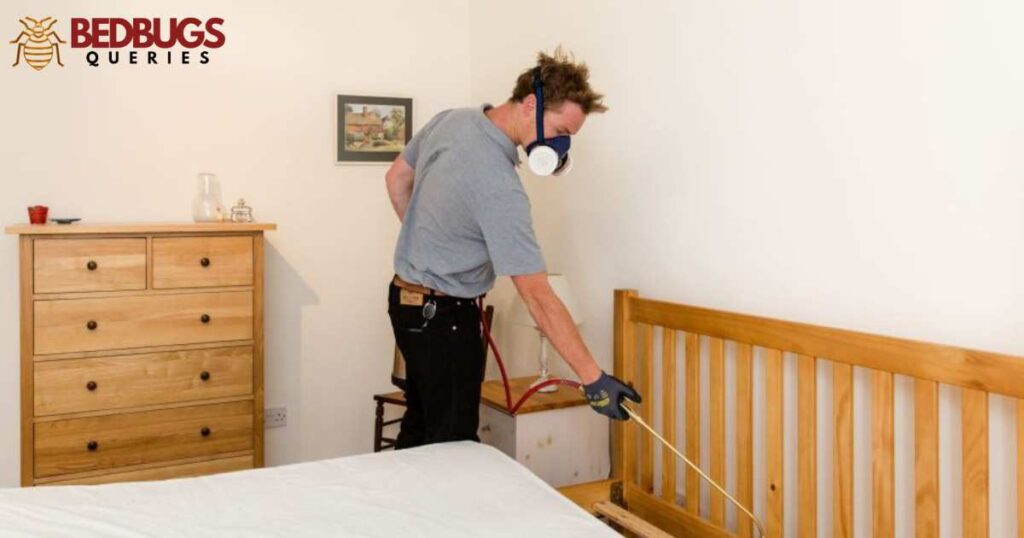
Getting rid of bed bugs can be challenging. Start by washing all bedding in hot water. Vacuum your mattress, furniture, and carpets. Use a bed bug spray on cracks and crevices. Steam cleaning can help too. Remember to bag and dispose of infested items.
Seek professional help if the infestation persists. Declutter your home, reducing hiding spots. Encase your mattress and box spring with bed bug-proof covers. Avoid bringing used furniture into your home. Regularly inspect your home to catch bed bugs early. Early action is key to eliminating these troublesome pests.
Identify the Infestation
If you wake up with itchy bites or notice small, reddish-brown bugs in your bed, it’s time to inspect your home for bed bugs. Look for dark spots, shed skins, or tiny eggs.
Clean and Declutter
Start by cleaning and decluttering your home. Vacuum mattresses, carpets, and upholstery thoroughly. Dispose of infested items, seal them in plastic bags, and wash bedding in hot water. DIY methods may not suffice. If the infestation persists, consult a pest control professional. They can use specialized treatments, like heat or chemicals, to effectively eliminate bed bugs from your home.
Frequently Asked Questions
Can bed bugs infest wood floors in my home?
Bed bugs typically don’t live on wood floors for extended periods. They prefer hiding near their host’s resting place, such as in mattresses or upholstered furniture.
How can I tell if bed bugs are on my wood floors?
You may spot bed bugs on wood floors briefly as they search for hiding spots. Look for reddish-brown insects, small dark spots, or shed skins as signs of their presence.
Do wood floors make it harder to get rid of bed bugs?
Bed bugs can hide in wood floor cracks temporarily, but the primary infestation is usually elsewhere. Proper treatment should focus on their main habitats, like mattresses and furniture.
What preventive measures can I take to avoid bed bugs on wood floors?
Regularly inspect your mattress and furniture for signs of bed bugs. Keep your home clean and vacuum regularly, paying attention to cracks and crevices.
What should I do if I suspect a bed bug infestation in my home?
If you suspect an infestation, consult a professional pest control service to assess the situation and develop an effective treatment plan.
What surfaces do bed bugs not like?
This is a simple and cost-effective way to keep bed bugs out of materials and improve the speed of control in a room. Bed bugs do not like to climb or stay on smooth plastic materials.
What kills bed bugs instantly?
Courtesy of its insecticidal properties, tea tree oil is an effective natural remedy to kill bed bugs instantly. You can spray the tea tree oil on furniture joints, headboards, cracks, and corners.
Conclusion
The question is, whether bed bugs live on wood floors can be answered with some clarity. Bed bugs, those pesky bloodsucking insects that disrupt our sleep, typically do not establish their long-term residence on wood floors. These resilient pests prefer to hide close to their primary food source, humans, and opt for hiding places like mattresses, upholstery, or cracks in walls.
Bed bugs may temporarily cross your wood floors as they search for new hiding spots or their next meal, they’re not likely to call your hardwood or laminate their permanent home. Maintaining vigilance is crucial. Regular inspections and preventive measures are essential to keep your home bed bug-free.
To sum it up, bed bugs might scuttle across your wood floors briefly, but their preferred hideouts are elsewhere. If you ever suspect a bed bug infestation, whether on wood floors or in any other part of your home, it’s wise to consult a professional pest control service. They’ll help you tackle the issue efficiently, ensuring your home remains a peaceful, bedbug-free sanctuary.


